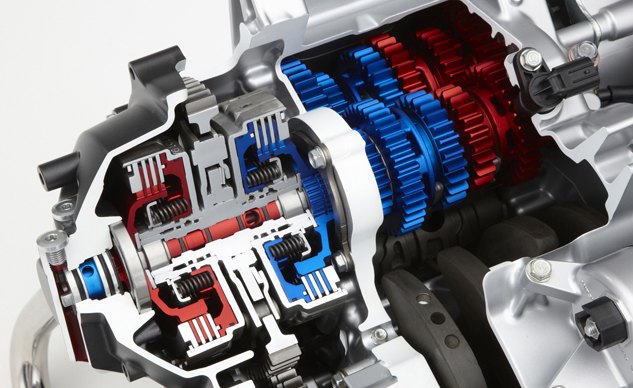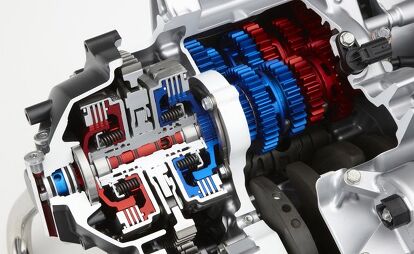Why Are DCT Setups Not Allowed in MotoGP, Yet Seamless Gearboxes Are?
Ask MO Anything: Wouldn't a dual-clutch transmission be better?
Dear MOby,
It would seem (pardon) that DCTs have much more applicability for production motorcycles than seamless transmissions as used in MotoGP racing, and therefore would be of more interest to the manufacturers to better leverage their racing investment. Doubly true these days, as manufacturers struggle to make motorcycling more accessible to a wider audience as us boomers are, er, “aging out,” so to speak.
Walter Barlow
Dear Walter,
Stop making sense. As near as I can figure, the FIM banned dual-clutch set-ups in MotoGP because the FIA had banned them earlier in Formula 1 (where they showed up more than 10 years ago). The FIA banned dual-clutch boxes because CVT gearboxes aren’t allowed (constantly variable transmission) – the rationale apparently being that since there’s zero lag time as gears are shifted in a dual-clutch transmission, a DCT is in effect a CVT.
With a seamless transmission, there’re still a few milliseconds between one gear and the next, and the rider still has to instigate the shift with his foot – which gets around the MotoGP reg prohibiting “purely electronic means of gearchange”. (Also since nobody at first understood how Honda’s new seamless gearbox worked in 2011, nobody was able to come up with a reasonable sounding reason to ban it.) Another stated reason for not allowing dual-clutch systems was to keep complexity and costs down, which seems to have backfired since Honda’s seamless gearbox work-around is reputedly way more costly than a DCT.
I’m with you: I’m a big fan of the DCT in every Honda I’ve ridden so equipped, and it’s a must-have for all riders whose feet or legs or left hand don’t work so hot anymore, if at all. Not only does Honda’s DCT work great, they’ve also gotten the price down to where it’s only an extra $700, for example, on the Africa Twin. Another drawback to the DCT on a MotoGP bike would be weight and a bit of bulk: Honda says the Africa Twin DCT weighs 23 pounds more than the manual gearbox version.
Honda Africa Twin Shootout: DCT vs Manual Transmission
The seamless gearbox remains somewhat mysterious, but various sources report they’re not only expensive to build, but also require constant servicing by dedicated mechanics – partly because they’re mechanically finicky, partly to maintain secrecy. All of it seems like a lot of effort to shave what most sources say is around 0.2 to 0.3 second per lap, which is a big deal in top-level racing but wouldn’t seem to be of much benefit at all to the average street rider.
Then again, it probably won’t be long before the World Superbike people decide they need that extra 0.2 second, and after that camel’s nose is in the tent, well… you never know. Today’s exotica is tomorrow’s Craigslist beater.
Here’s a great video to explain how the seamless gearbox actually works.
Recent Ask MO’s:
Transverse or Longitudinal V-Twin?
Harley-Davidson Roadster or Triumph Bobber?
Why Does My Motorcycle Clunk When I Shift Into First Gear?
Send your questions to AskMoAnything@motorcycle.com. Questions are answered by volume, not by weight. Some settling of your answer may occur during shipping and handling. Not responsible for lost or stolen answers, and definitely not responsible for wrong answers, though we’re happy to take the credit if we’re right.
More by John Burns
































Comments
Join the conversation
What did he say in the video? I'm pretty sure he used ten of the seven words banned from TV.
"A DCT is in effect a CVT".
WHAT? NO. Not even close. Sorry. No.